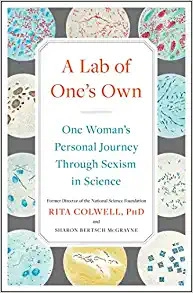Reading Level
What is the reading level of A Lab of One's Own: One Woman's Personal Journey Through Sexism in Science?
Analysing the books in the series, we estimate that the reading level of A Lab of One's Own: One Woman's Personal Journey Through Sexism in Science is 9th and 10th grade.
Expert Readability Tests for
A Lab of One's Own: One Woman's Personal Journey Through Sexism in Science
| Readability Test | Reading Level |
|---|---|
| Flesch Kincaid Scale | Grade 9 |
| SMOG Index | Grade 11 |
| Coleman Liau Index | Grade 10 |
| Dale Chall Readability Score | Grade 7 |
Reading Time
5 hrs 17 mins
How long to read A Lab of One's Own: One Woman's Personal Journey Through Sexism in Science?
The estimated word count of A Lab of One's Own: One Woman's Personal Journey Through Sexism in Science is 79,205 words.
A person reading at the average speed of 250 words/min, will finish the book in 5 hrs 17 mins. At a slower speed of 150 words/min, they will finish it in 8 hrs 49 mins. At a faster speed of 450 words/min, they will finish it in 2 hrs 57 mins.
| A Lab of One's Own: One Woman's Personal Journey Through Sexism in Science - 79,205 words | ||
|---|---|---|
| Reading Speed | Time to Read | |
| Slow | 150 words/min | 8 hrs 49 mins |
| Average | 250 words/min | 5 hrs 17 mins |
| Fast | 450 words/min | 2 hrs 57 mins |
- Authors
-
Rita Colwell PhDSharon Bertsch McGrayne
More about A Lab of One's Own: One Woman's Personal Journey Through Sexism in Science
79,205 words
Word Count
for A Lab of One's Own: One Woman's Personal Journey Through Sexism in Science
288 pages
Pages
8 hours and 31 minutes
Audiobook length
Description
A riveting memoir-manifesto from the first female director of the National Science Foundation about the entrenched sexism in science, the elaborate detours women have taken to bypass the problem, and how to fix the system. If you think sexism thrives only on Wall Street or in Hollywood, you haven’t visited a lab, a science department, a research foundation, or a biotech firm. Rita Colwell is one of the top scientists in America: the groundbreaking microbiologist who discovered how cholera survives between epidemics and the former head of the National Science Foundation. But when she first applied for a graduate fellowship in bacteriology, she was told, “We don’t waste fellowships on women.” A lack of support from some male superiors would lead her to change her area of study six times before completing her PhD. A Lab of One’s Own documents all Colwell has seen and heard over her six decades in science, from sexual harassment in the lab to obscure systems blocking women from leading professional organizations or publishing their work. Along the way, she encounters other women pushing back against the status quo, including a group at MIT who revolt when they discover their labs are a fraction of the size of their male colleagues’. Resistance gave female scientists special gifts: forced to change specialties so many times, they came to see things in a more interdisciplinary way, which turned out to be key to making new discoveries in the twentieth and twenty-first centuries. Colwell would also witness the advances that could be made when men and women worked together—often under her direction, such as when she headed a team that helped to uncover the source of the anthrax used in the 2001 letter attacks. A Lab of One’s Own shares the sheer joy a scientist feels when moving toward a breakthrough, and the thrill of uncovering a whole new generation of female pioneers. But it is also the science book for the #MeToo era, offering an astute diagnosis of how to fix the problem of sexism in science—and a celebration of the women pushing back.
